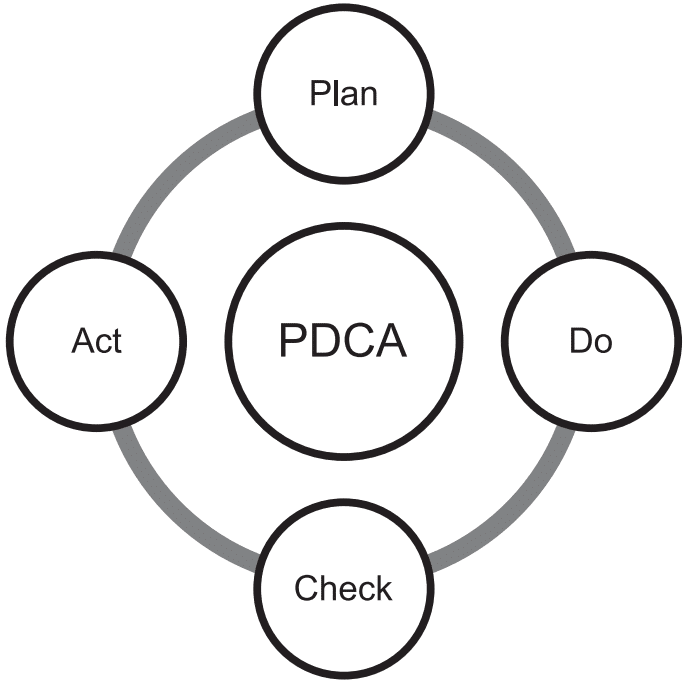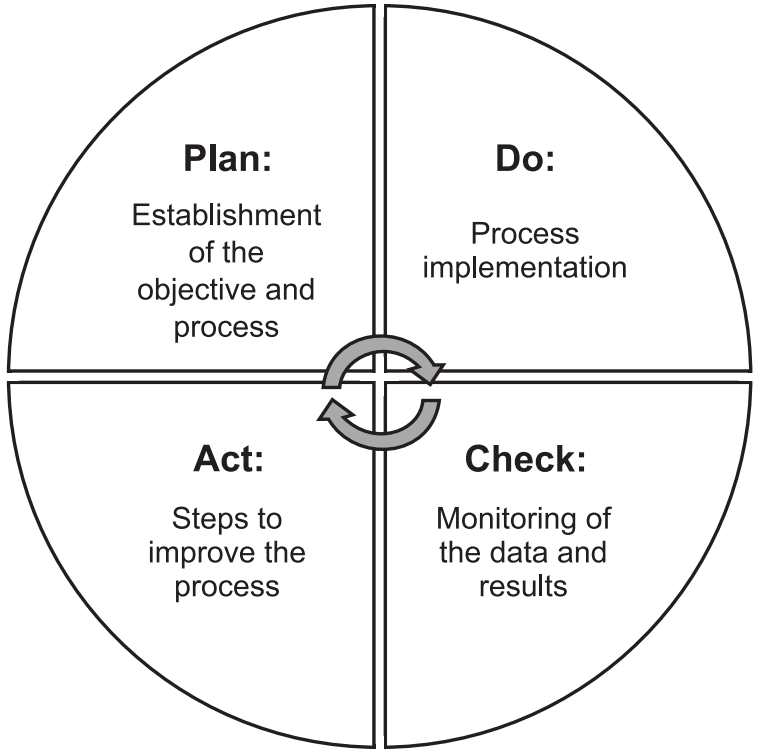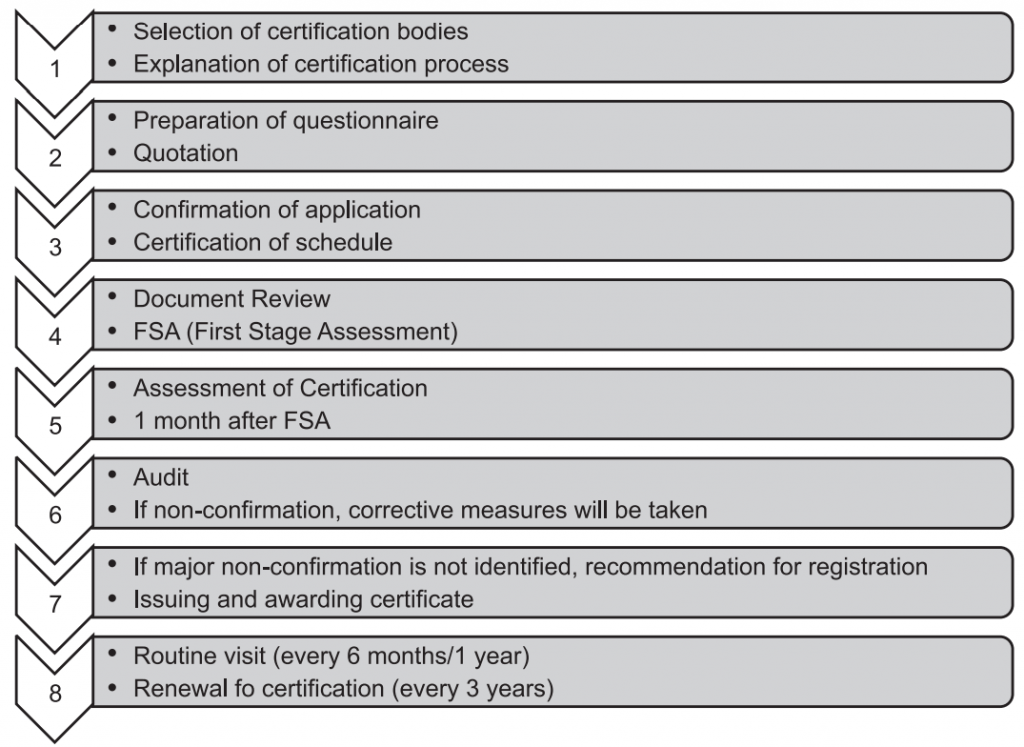Introduction
Table of Contents
ISO 14000 family provides practical tools to manage the environmental responsibilities of companies and organizations. It was initially published in 1996 and revised in 2004. This standard is related to Environmental Management System (EMS). ISO 14000 is considered as a generic management system and it is applicable for the following:
- Any organization (single-site to large MNCs, high risk to low-risk companies).
- The manufacturing industries (equipment manufacturers and suppliers), process industries, and service industries.
- All industries of local government, public and private sectors.
The basic features of ISO 14000 are:
- Minimum harmful effects on the environment.
- Continuous improvement to achieve the desired performances.
Principle of ISO 14000
The principle of ISO 14000 is explained by PDCA Model.
1. Plan: Designing of aim, objective, and processes to achieve the desired result.
2. Do: The designed process should be performed step by step. The changes are noted and data is stored to analyze the results.
3. Check The evaluation of the data and results recorded in the previous steps.
4. Act: The evaluation of the data and results helps to improve the process. In this step, the problems of the result are rectified for continuous improvement, for this purpose, Do and Check steps may be repeated several times for a better outcome. The causes of the difference in the results are identified and improved. This step is often named ‘Adjust’.


Features of ISO 14000
The features of ISO 14000 are mentioned:
1. EMS (Environmental Management System).
2. Environmental-related evaluations, investigations, and auditing.
3. The investigation of the process performances.
4. Environmental labels and declarations.
Advantages of ISO 14000
By getting ISO certification any organization can maintain their conformation to the environmental regulations. This certification can help an organization in the following ways:
- Better marketability.
- Better utilization of resources.
- Environmental responsibilities.
- Better quality of finished goods and products.
- Customers’ satisfaction.
- Enhancement of the reputation and reliability of the organization.
- Improvement of the relationship among management, employees, customers, and investors.
- Cost reduction.
ISO 14000 Series
ISO 14001 (2015)
EMS: Requirements with guidance for use
ISO 14004 (2016)
EMS: General guidelines on implementation
ISO 14006 (2011)
EMS: Guidelines for incorporating ecodesign
ISO 14015 (2001)
EM: Environmental assessment of sites and organizations (EASO)
ISO 14020 to 14025 (2000)
EM: Environmental labels and declarations
ISO 14031 (2013)
EM: Guidelines for environmental performance evaluation
ISO 14040 (2001)
EM: Life cycle assessment, environment goal setting
ISO 14050 (2009)
EM: Vocabulary (terms and definitions)
ISO 14063 (2006)
EM: Guidelines and examples of environmental communication
ISO 14064 (2006)
Quantification of emitted Greenhouse gases and their reduction
(Note: EM” and EMS stand for Environment Management and Environment Management System respectively).
Process of ISO 14001 Certification

Environmental Management System (EMS)
EMS is a system that monitors, reviews, summarizes, evaluates, reports, and improves environmental performances to achieve environmental goals. EMS helps to reduce the environmental impact and to increase efficiency. Waste reduction is one of the important goals of EMS.
Features of EMS:
The EMS has the following features:
1. Improvement of environmental performances.
2. Controlling and managing environmental policies in the organization in a systematic way to maintain the long-term effect of better products, service, and customer satisfaction.
3. Process design to control pollution and waste reduction.
4. Reducing the impact of environmental factors.
5. Training of the personnel about the process and control.
6. Assistance in planning, controlling, and monitoring the environmental policies in the organization.
7. Continuous improvement to meet the desired goal and result.
8. Maintains accountability between the management and employee personnel.
Make sure you also check our other amazing Article on : ISO 9000 Series